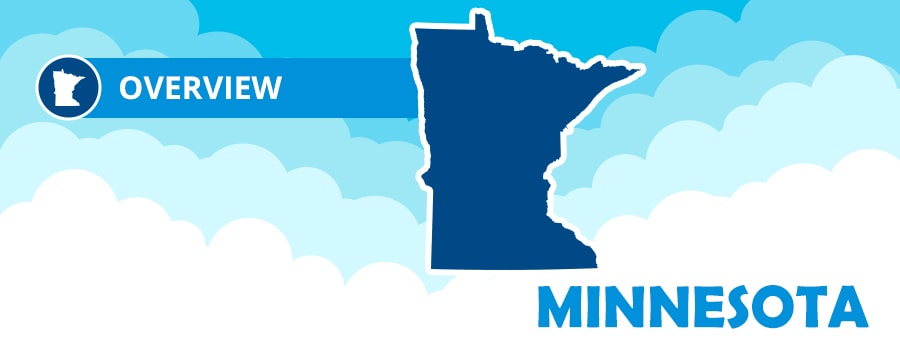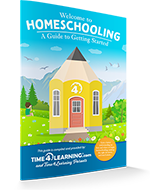Homeschooling In Minnesota
More and more families are choosing to homeschool their children in Minnesota each year. During the recent school year, more than 27,500 families were homeschooling their children in the North Star State.
This page will guide you through the steps to homeschooling in Minnesota. From the state laws on home instruction, to finding local support, how to submit your notice of intent to homeschool and even fascinating field trip ideas around the state!
- How to Start Homeschool in Minnesota
- Minnesota Homeschooling Laws
- Minnesota Homeschool Associations
- Minnesota Homeschool Groups and Co-ops
- Minnesota Homeschool Field Trips
- Minnesota Standardized Testing and Test Prep
- Why Time4Learning is the Leading Homeschool Curriculum in Minnesota
- How to Build the Best Homeschool Curriculum for PreK-12 in Minnesota
This information should by no means be interpreted as legal advice. It is your responsibility to interpret and understand the laws that you will be homeschooling under.
How to Start Homeschooling in Minnesota
To start homeschooling in Minnesota parents must:
- Submit a Letter of Intent to homeschool every year
- Meet the required qualifications (5 ways to do this)
- Provide instruction in the required subjects
- Choose your ideal homeschool curriculum
- Participate in standardized tests every year
- Maintain records (tests, scores, completed lessons, etc)
- Start enjoying homeschooling together
Welcome to Homeschooling Guide
Download this FREE resource where experienced homeschoolers share their stories for how to begin homeschooling, understanding your child academically, planning your days, and much more.
Minnesota Homeschooling Laws
The steps to homeschooling in Minnesota are simple. As long as you teach the required subjects, test your children annually, and keep diligent records of lesson plans, books and materials, proof of testing, and copies of your students’ schedules, you will easily be able to comply with the homeschooling laws in the state of Minnesota.
For a more detailed explanation of the law, visit the Minnesota Homeschooling Laws page.
Minnesota Homeschool Associations
Minnesota is a thriving homeschooling community with two awesome statewide homeschool associations.
- The Minnesota Homeschoolers Alliance
- Minnesota Association of Christian Home Educators
Both organizations work toward a single, mutual goal—the goal to keep homeschooling growing and strong throughout the state.
Find out more about these great go-to resources for all things homeschooling in the North Star State on our Minnesota Homeschool Associations page.
Minnesota Homeschool Groups and Co-ops
The support of a local homeschool group and/or co-op is priceless during any phase of your homeschooling journey. All homeschooling parents, whether new or veteran, can always benefit from the unique encouragement and fellowship from other homeschooling parents in Minnesota.
For more information and help locating a homeschool support group and/or co-op near you, please visit our Minnesota Homeschool Groups and Co-ops page.
Homeschool Field Trips in Minnesota
One of the beauties of homeschooling is the freedom to take your learning out and about as often as you desire. And, beautiful Minnesota, known as the Land of 10,000 Lakes, is overflowing with countless opportunities to add a splash of nature to your homeschool program. Minnesota also has a rich Native American heritage, it is home to a multitude of unique museums, arts and cultural centers, and last but certainly not least…The Mall of America, where education meets entertainment and every visit ends with a big WOW! Please make sure to contact each site before you plan your visit, as COVID-19 may have impacted their hours of operations.
For an extensive list of great field trip ideas, please visit our Homeschool Field Trips in Minnesota
Minnesota State Test Prep
Annual testing gives you the added bonus of yearly evaluation which will help you spot any weaknesses in your child’s skill set so you can address those in the future. This testing should be a breeze with Time4Learning standards based courses, especially in math and language arts, designed to meet or exceed the state content standards and course objectives. Learn more in our Minnesota test prep page.
Why Time4Learning is the Leading Homeschool Curriculum in Minnesota
Homeschoolers in Minnesota can confidently choose Time4Learning’s online curriculum to work towards achieving their educational goals. Because Minnesota requires parents to keep records, teach specific subjects and take standardized tests, you’ll want to make sure you and your students are adequately prepared for these requirements.
Here are just some of the reasons why many homeschooling families in Minnesota use Time4Learning:
- Core subjects such as math, language arts, science, and social studies are included in our membership. Additional electives are available depending on the grade level of your student.
- We provide detailed lesson plans broken out per subject by chapter. Each chapter will list all of the lessons and related activities within that chapter and include a detailed description of what the student will be demonstrating.
- Our system automatically tracks and grades all your child’s achievements. All reports are available for download through the parent dashboard, making record keeping an easy task.
- Planning is easy with our integrated activity planner. Easily set up a planner for the year, schedule breaks if needed, ability to add a percentage grade threshold, and more. Your student will have no trouble knowing what they need to accomplish each day.
- The flexibility of the curriculum allows students to move between grade levels on different subjects. This allows students to go back and practice concepts to achieve mastery, or allows them to move ahead for more of a challenge!
- Our online program instills a love of learning through engaging and fun interactive activities, while promoting critical-thinking and problem-solving skills.
- Improve your students’ retention and overall learning capacity with our multisensory lessons which stimulate visual, auditory, and motor skills that work together to activate more regions within a student’s brain.
- Time4Learning’s self-guided curriculum helps your students become independent learners.
How to Build the Best Homeschool Curriculum for PreK-12
Homeschool curriculum choices have expanded over the last decade. Parents have much more to choose from than typical textbooks, workbooks, and other traditional schooling methods. Online courses, interactive videos, personal computers, laptops, and tablet devices provide exciting and engaging materials for children to experience. But all of these new methods often confuse parents, especially those who are new homeschoolers.
Eventually, parents come to realize that mixing different tools and activities usually keeps their children stimulated and eager to learn. For more information, review How to Build the Best Homeschool Curriculum for PreK-12.
Minnesota Unit Study Supplement
Help your homeschooler learn interesting history and geography facts about Minnesota in the Time4Learning unit study supplement.
Online Curriculum for Homeschool, Afterschool and Summer Use
In addition to being an award-winning choice for homeschool families, Time4Learning also offers an online after school program to help build your child’s skills. View our lesson demos and discover why thousands of families in Minnesota are already using it!
Give your student the chance to get back on track or explore exciting electives and get ahead for the next school year with Time4Learning’s online summer school. Our educational materials will engage and challenge your child to succeed.








